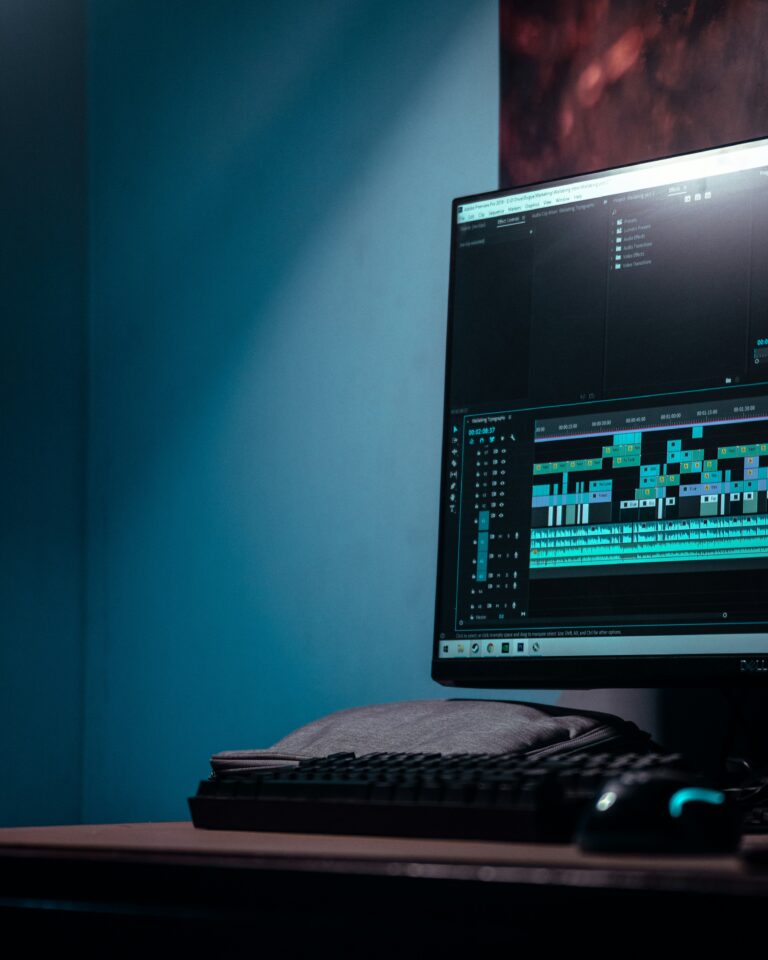Procure To Pay
Let’s talk about “Procure To Pay,” or as it’s more fondly known, P2P. Imagine it as the backbone of how businesses buy goods and services, smoothly transitioning from picking out what they need all the way through to paying for it. Think of it as a journey where each step, from initially spotting what you need to finally making the payment, is connected in a seamless flow. It’s sort of the behind-the-scenes hero in the corporate world, ensuring that everything a company needs is bought and paid for without a hitch. Whether it’s office supplies or a new software subscription, P2P keeps the process tight and the headaches minimal.

This image is property of images.unsplash.com.
Overview of Procure to Pay
Definition and Scope
Procure to Pay, or P2P, is a process that I’ve found to be the backbone of any organization’s procurement and financial operations. In simple terms, it encompasses all the steps from identifying a need for a product or service to the final payment made to the supplier. This journey involves various stages, such as selecting suppliers, negotiating contracts, and managing invoices, each playing a critical role in ensuring that procurement is both cost-effective and efficient.
Key Components and Process Flow
The Procure to Pay process is a sequence of steps starting with the identification of a requirement, moving on to the purchasing phase, receiving and verifying the goods or services, processing the invoice, and finally, completing the payment. This flow ensures that there is a systematic approach to procuring goods and services, which helps in maintaining a smooth operation.
Importance in Supply Chain Management
In the realm of supply chain management, P2P stands out for its capacity to streamline procurement and financial transactions, thereby increasing transparency and optimizing expenditure. By efficiently managing procurement activities, organizations can significantly enhance their overall supply chain performance, making P2P an indispensable part of supply chain management.
Pre-Purchase Activities
Supplier Identification and Management
Before any purchase, it’s crucial to identify and manage suppliers. This involves researching potential suppliers, evaluating their capabilities, and ultimately selecting those that meet the organization’s criteria for quality, price, and reliability. Efficient supplier management lays the groundwork for a successful procurement process.
Requisitioning Process
The requisitioning process is where the need for a product or service is formally identified and requested. In my experience, this step is critical as it lays the foundation for the entire procurement process. It involves specifying what is needed, why, and when it is needed, ensuring that the procurement team has clear directives.
Approval Workflows
Approval workflows ensure that each purchase request is vetted and authorized by the appropriate personnel before proceeding. This step is vital for managing expenses and ensuring compliance with the organization’s purchasing policies.
Budget Checks and Compliance
Before any commitment is made, it is essential to check that the purchase aligns with the budget and complies with relevant laws and regulations. This step helps in avoiding financial mismanagement and legal issues down the line.
Purchasing Process
Purchase Order Creation
Once a supplier is chosen and the pre-purchase steps are complete, a purchase order (PO) is created. This document formalizes the buying agreement, specifying the products or services, quantities, and agreed-upon prices, acting as a legal contract between the buyer and seller.
Order Management
Managing the order involves ensuring that the products or services are delivered as per the terms outlined in the PO. This includes monitoring the order status, communicating with the supplier, and making any necessary adjustments to ensure timely delivery.
Role of Contract Management
Contract management is crucial in the P2P process for enforcing the terms agreed upon with the supplier. It involves managing contracts effectively to ensure that both parties fulfill their commitments, thereby reducing risk and promoting a healthy supplier relationship.
E-Procurement Systems
E-procurement systems have revolutionized the purchasing process by automating and streamlining operations. These systems facilitate easier supplier selection, PO creation, and order management, contributing significantly to the efficiency and speed of the procurement process.
Receiving and Reconciliation
Goods Receipt Note (GRN) Process
Upon receiving the goods or services, a Goods Receipt Note (GRN) is generated to document the arrival. This note is essential for confirming that the delivery matches the PO specifications in terms of quantity and quality.
Quality Checks and Inspections
Performing quality checks and inspections on received goods is crucial for ensuring that they meet the specified requirements. This step helps in identifying any discrepancies early and taking corrective action, ensuring that only acceptable products are processed and paid for.
Three-Way Matching Process
The three-way matching process involves comparing the PO, the GRN, and the invoice to ensure consistency across all documents. This critical step helps in preventing errors and fraud, ensuring that payments are made only for goods or services correctly received.
Handling Discrepancies
When discrepancies arise, it’s important to address them promptly with the supplier to resolve any issues related to quality, quantity, or pricing. Efficiently handling these discrepancies is key to maintaining good supplier relationships and ensuring smooth operations.
Invoice Processing
Invoice Receipt and Verification
The invoice from the supplier is received and verified against the PO and the GRN. This step ensures that the invoiced amount matches the agreed-upon price and the goods or services received.
Automating Invoice Processing
Automating the invoice processing through P2P software can significantly enhance efficiency by reducing manual errors and speeding up the processing time. This technology helps in seamlessly managing the inflow of invoices, especially in high-volume environments.
Dispute Resolution Mechanisms
Having mechanisms in place for resolving disputes over invoices is crucial. This includes clear processes for disputing charges and resolving issues in a timely and effective manner, thereby ensuring that relationships with suppliers remain positive.
Payment Terms and Conditions
The payment terms and conditions, typically outlined in the PO or the contract, determine the payment timeline and method. Adhering to these terms is essential for maintaining good supplier relations and managing cash flow effectively.
Payment Process
Payment Approval Process
Before a payment is processed, it must go through an approval process. This ensures that all the necessary verifications have been completed and that the payment is justified, reducing the risk of errors or fraud.
Payment Execution
Executing the payment involves transferring the funds to the supplier as per the agreed payment terms. This step concludes the P2P process, fulfilling the organization’s obligations towards the supplier.
Early Payment Discounts
Some suppliers offer discounts for early payments. Taking advantage of these discounts can lead to significant cost savings, making it an aspect worth considering in the payment process.
Electronic Payment Systems
Electronic payment systems facilitate efficient and secure transactions. They not only speed up the payment process but also provide a digital trail that aids in record-keeping and reconciliation.
Technology in Procure to Pay
Importance of P2P Software
P2P software plays a pivotal role in optimizing the procurement process by automating and streamlining various steps. From improving accuracy to facilitating better communication with suppliers, the importance of P2P software in enhancing procurement efficiency cannot be overstated.
Features of Leading P2P Solutions
Leading P2P solutions offer features like automated approval workflows, electronic invoicing, and real-time analytics. These capabilities significantly contribute to reducing processing times, increasing transparency, and enabling better strategic decision-making.
Integration with ERP Systems
Integrating P2P software with existing Enterprise Resource Planning (ERP) systems allows for seamless data flow across various business functions. This integration helps in achieving a unified view of procurement activities, financial transactions, and inventory management.
Analytics and Reporting for P2P Process
Analytics and reporting tools offered by P2P solutions provide valuable insights into procurement practices, helping organizations identify trends, monitor performance, and make informed decisions to optimize the P2P process.
Managing Supplier Relationships
Strategies for Effective Supplier Management
Effective supplier management involves regular communication, performance evaluations, and collaborative problem-solving. By adopting these strategies, organizations can build strong relationships with their suppliers, ensuring a stable and reliable supply chain.
Performance Tracking and Audits
Tracking supplier performance and conducting regular audits are essential for maintaining high standards of quality and service. These practices help in identifying areas for improvement and ensuring contractual compliance.
Risk Management in Supplier Relationships
Risk management involves identifying potential risks in supplier relationships and implementing strategies to mitigate them. This could include diversifying the supplier base or developing contingency plans, ensuring business continuity in the face of disruptions.
Developing Strategic Partnerships
Developing strategic partnerships with key suppliers can lead to mutually beneficial outcomes. These partnerships often result in improved innovation, cost savings, and preferential treatment, highlighting the value of investing in long-term supplier relationships.
Challenges in Procure to Pay
Common Pitfalls and How to Avoid Them
One common pitfall in the P2P process is inadequate communication, leading to misunderstandings and errors. To avoid this, it’s essential to maintain clear and open communication channels with all stakeholders. Additionally, relying too heavily on manual processes can lead to inefficiencies and increased error rates, making the case for investing in automation and technology.
Managing Change in Procure to Pay Implementation
Implementing changes in the P2P process can be challenging, particularly in terms of managing stakeholder expectations and overcoming resistance. Effective change management strategies, such as providing training and emphasizing the benefits of the new process, are key to successful implementation.
Compliance and Regulatory Challenges
Compliance with industry regulations and standards is a significant challenge in the P2P process. Staying informed about relevant laws and regulations and integrating compliance checks into the procurement process can help mitigate these challenges.
Addressing Fraud and Security Concerns
Fraud and security concerns are ever-present risks in procurement operations. Implementing robust security measures, such as encryption and access controls, and conducting regular audits can help protect against these risks.
Future Trends in Procure to Pay
Impact of AI and Machine Learning
Artificial Intelligence (AI) and Machine Learning (ML) are set to revolutionize the P2P process by automating complex tasks, improving decision-making, and enhancing overall efficiency. The ability of AI to analyze vast amounts of data can provide unprecedented insights, leading to more strategic procurement practices.
Blockchain Technology in P2P
Blockchain technology offers the potential for making the P2P process more secure and transparent. By facilitating secure, tamper-proof transactions, blockchain can significantly reduce fraud and streamline contract enforcement, revolutionizing how transactions are executed and recorded.
The Role of Internet of Things (IoT)
The Internet of Things (IoT) can improve the P2P process by providing real-time data on the status of orders and shipments. This information can enhance order management, inventory control, and supplier performance monitoring, contributing to more efficient and responsive procurement operations.
Predictive Analytics in Procurement
Predictive analytics utilizes data, statistical algorithms, and machine learning techniques to identify the likelihood of future outcomes. In procurement, these insights can help forecast demand, manage risks, and optimize supply chain strategies, making the procurement process more proactive and strategic.






